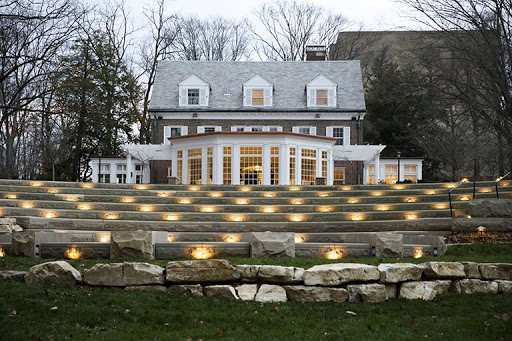It is a fact that artificial products are designed to imitate authentic products with the allure of less cost and all the aesthetics. With several types of building stone available in the market, people generally prefer buying natural building stone. It assures durability and longevity alongside the impressive look and feels which cannot be expected in faux items that are manufactured to imitate the originals. Let us discuss the environmental impact of natural building stone and precast or concrete manufacturing.
A Quick Discussion on Natural Building Stone and its Environmental Impact
Global warming is on the surge in the past few decades. The reason for the drastic changes in the business practices of companies and the demand for less expensive products by the consumers. The sustainability and environmental impacts are now bubbling to the surface and becoming visible to the mass population. It indicates that the world is on the verge of facing dire consequences due to human actions that have lost its direction.
If we talk about construction item manufacturing, the first thing that comes in mind is building stone. The natural building stone (granite, marble, and Limestone) is Eco-friendly and only requires electricity and recycled items like water used in the production process. It is generally amongst the top-priority of clients due to its sustainability, even with the initial cost being higher than concrete faux stone.
If we talk about construction item manufacturing, the first thing that comes in mind is building stone. The natural building stone (granite, marble, and Limestone) is Eco-friendly and only requires electricity and recycled items like water used in the production process. It is generally amongst the top-priority of clients due to its sustainability, even with the initial cost being higher than concrete faux stone.
Impact on Environment while Manufacturing Natural Building Stone
Natural building stone manufacturing processes have been done for many centuries and decades, without the harmful impact or unnecessary damage to the environment. The manufacturing of granite, marble, and Limestone creates only a fraction of carbon dioxide per ton as compared to manufacturing faux stones such as concrete, which is not safe for the environment in any case. People who prefer quality over cost will always have natural building stones as their first choice. Also, with the growing concerns with Silica being present faux products and some natural stones, limestone is set apart with non detectable levels of Silica and it’s harmful effects.
Top Four Reasons Why Natural Building Stone is Preferred
Here are the top five reasons why natural building stone is given top priority during building construction before others:
– Longevity: No matter what Cladding material you choose, the only desire in mind is to opt for the one which is durable and long-lasting. The natural building stone having the exclusive properties is the best fit for residential and commercial building facades as well as can be used for making the interiors look exemplary. Marble, sandstone, Granite, and Limestone are classified as natural building stones and offer a stunning appearance once installed at the required space. It is slightly costlier as compared to the human-made faux stone. It is often said that cost is not a matter of concern when you get something more valuable than money.
– Recycling: Natural building stone has longevity, and it can overhaul the complete look & feel of the residential or commercial building. Life cycle costs for natural products have been proven to be less expensive over the long run.
– Minimal maintenance: You will surely be able to save the maintenance cost as the natural stone once installed on building facades, landscapes, and hardscapes, requires little or no maintenance after installation. It remains aesthetically beautiful and fully functional.
– Environmental impacts of manufacturing: Faux products include harsh chemicals, and very complex processing sequences that if not controlled will lead to premature failures and major aesthetic imperfections like crazing and cracking. With natural products, mother nature has already done the hard work, and we just help bring out the beauty.
– Longevity: No matter what Cladding material you choose, the only desire in mind is to opt for the one which is durable and long-lasting. The natural building stone having the exclusive properties is the best fit for residential and commercial building facades as well as can be used for making the interiors look exemplary. Marble, sandstone, Granite, and Limestone are classified as natural building stones and offer a stunning appearance once installed at the required space. It is slightly costlier as compared to the human-made faux stone. It is often said that cost is not a matter of concern when you get something more valuable than money.
– Recycling: Natural building stone has longevity, and it can overhaul the complete look & feel of the residential or commercial building. Life cycle costs for natural products have been proven to be less expensive over the long run.
– Minimal maintenance: You will surely be able to save the maintenance cost as the natural stone once installed on building facades, landscapes, and hardscapes, requires little or no maintenance after installation. It remains aesthetically beautiful and fully functional.
– Environmental impacts of manufacturing: Faux products include harsh chemicals, and very complex processing sequences that if not controlled will lead to premature failures and major aesthetic imperfections like crazing and cracking. With natural products, mother nature has already done the hard work, and we just help bring out the beauty.
Now Let us Talk About Concrete Stone Before Coming to Any Conclusion
Concrete faux stone, as we all know, is a human-made manufactured stone whose process of manufacturing has an adverse impact on the environment. It possesses intense energy and emits a lot of carbon dioxide in the atmosphere.
The manufactured stone consist of 25% cement and 75% aggregate. The beginning stages are quite like the initial process of natural stone manufacturing. Once the stone is extracted, it is required to be crushed into different sizes of aggregate.
Once the initial procedure gets completed, the process of preparing the cement portion of the concrete must be analyzed. The appropriate portion of calcium, silicon, and aluminum, as well as iron materials, is heated at a high temperature.
As the burning procedure keeps going on, many components are blown away in the form of gas; thereby adding pollution to the environment. It is a fact the world’s greenhouse gas omission receives a contribution of 4.8% from concrete manufactured stone preparation.
Wrapping Up
As we have described everything about the natural building stone and concrete faux stone manufacturing, it is all on you to choose between the two. If you ask us, then we would recommend you to be environmentally friendly and opt for natural building stone. The slight price increase for natural building stone can be easily justified in the aesthetics, environmental impacts, and the product life cycle.



